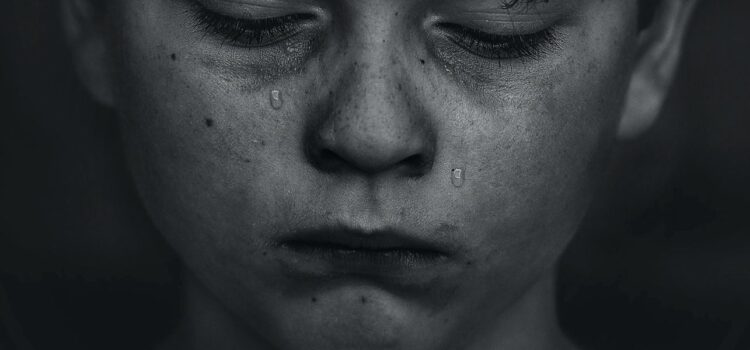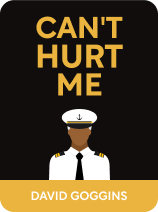

This article is an excerpt from the Shortform book guide to "Can't Hurt Me" by David Goggins. Shortform has the world's best summaries and analyses of books you should be reading.
Like this article? Sign up for a free trial here .
What was David Goggins’ childhood like? What kinds of obstacles did Goggins have to overcome?
David Goggins’ childhood was difficult—he dealt with an abusive father, who made him work constantly at the family business, Skateland. When his mother left his father, the family dealt with poverty, trauma, and chronic stress.
Read more about David Goggins’ childhood.
David Goggins’ Childhood
David Goggins’ childhood was marked by stress and trauma. But Goggins’ childhood was also defined by his determination and perseverance, and his decision to make something of himself no matter what.
School Struggles
During David Goggin’s childhood, his father made him work long hours t the family business, Skateland. Due to his work at Skateland, Goggins had fallen behind in school. He, his brother, and mother worked at night, often sleeping on a couch in an office onsite. He was often sleep-deprived during the day.
When they arrived in Brazil, Goggins’s mother enrolled him in the second grade for a second time because he couldn’t yet read at a second-grade level. He had a wonderful teacher who dedicated extra time to helping him learn.
But during the third grade, Goggins’s teacher, Ms. D, wasn’t willing to give him the extra instruction and care he needed to succeed in class. She thought Goggins needed to be placed in a separate school for special needs students, and the school administration supported her.
It was stressful for Goggins to be thought of as lesser, especially because he was the only black child at the school. He scaled back his participation in class and developed a stutter. Goggins’s mother fought the decision to send Goggins to another school, and the school agreed to let him stay if he was enrolled in group therapy.
But group therapy included children with true illnesses, unlike Goggins, who needed assistance catching up academically. This further augmented his stress—his stutter worsened, and he started losing patches of hair and developing white splotches on his skin.
Refusing to continue with group therapy, and facing pressure from his teacher to do better, Goggins started cheating. It improved his grades and test scores, reassuring Ms. D but stunting his learning.
David Goggins’ Childhood Poverty
David Goggins’ childhood was also made difficult by poverty. Goggins’s mother took a job at a local department store to support her son. They lived in subsidized housing, but still struggled to make ends meet.
When Goggins’s mother attempted to get on welfare, she learned she was considered ineligible because she had a car. She devised a workaround, routing the check through her mother, who lived in town. But the check was for only $123 each month. Between her job, welfare, and stores of coins she had saved over the years, they scraped by, but barely, augmenting Goggins’s stress.
Toxic Stress
Goggins learned later in life that toxic stress—the term for prolonged stress faced in childhood—likely altered his development.
Stress is helpful for survival in the short term, but in the long-term, it can have severe consequences. High stress levels limit children’s ability to retain information and build language skills, which limits their learning. When kids are exposed to toxic stress, they can develop health problems later in life, such as depression, obesity, and heart disease. They’re also more likely to engage in risky behavior, like smoking. A child raised in an abusive household has a 53 percent likelihood of being arrested before the age of 18, and is 38 percent more likely to commit a crime as an adult.
In his adult life, Goggins grappled with the effects of toxic stress from his childhood.
Trauma
In addition to the trauma Goggins faced at the hands of his father, another tragedy affected him and his mother in Indiana. His mother was engaged to be married to a man who was a good influence and provided some stability in their lives. They were scheduled to move into his Indianapolis home, but he was murdered days before the move.
Goggins and his mother moved to Indianapolis anyway, but his mother coped with her fiance’s death by busying herself with work. Goggins often skipped school and spent time with other kids, who negatively influenced his behavior. After his mom caught him skipping school with those students, she decided to move herself and Goggins back to Brazil.
Racism
When Goggins lived in Brazil as a young kid, he’d been unaware of racism. This started to change when he and his mother moved back from Indianapolis. Goggins faced a slew of direct and indirect harassment, from having his life threatened at gunpoint on a rural road to having a noose drawn in his Spanish workbook. He struggled to understand how people could be so hateful. David Goggins’ childhood was made even more difficult by these experiences.
Despite having many good friends, most of whom were white, he still felt the loneliness of being one of the only black people in town. He thinks it’s hard for people to understand the struggle of being the only person like yourself around, yet many minorities, women, and gay people face this daily.
Fighting Back
Goggins felt a lot of strong emotions from facing racism, but he didn’t know how to channel them. Seeking comfort, he watched the speeches of Malcolm X, the leader of the Nation of Islam whose movement called for racial justice for black people in the 1960s. He identified with X’s anger at a society that elevates white people, but he still couldn’t channel his frustration into anything beyond hate.
He started trying to come up with ways to get a rise out of the racists around him. He wore unusual clothing, trimmed his hair in odd ways, and blared music from his car.
Though David Goggins’ childhood was difficult, he was determined to succeed and would eventually find his path.

———End of Preview———
Like what you just read? Read the rest of the world's best book summary and analysis of David Goggins's "Can't Hurt Me" at Shortform .
Here's what you'll find in our full Can't Hurt Me summary :
- What a Navy SEAL says about pushing yourself to achieve greatness
- How to put in more effort to realize your potential
- The 10 challenges you can take on to reach your goals






